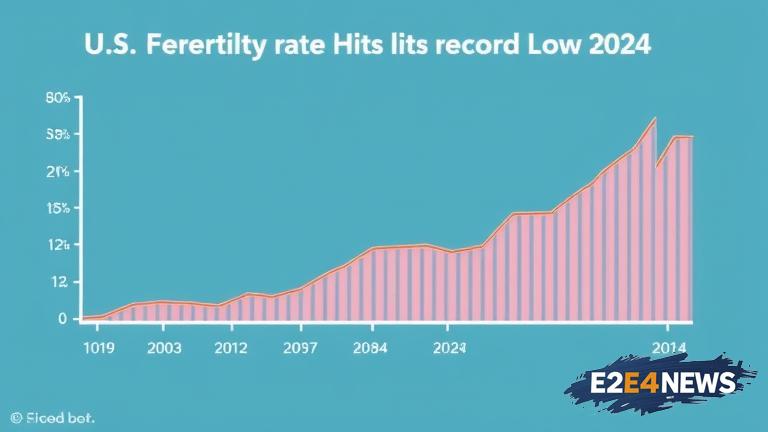The United States has witnessed a significant decline in its fertility rate, with the latest data indicating a record low in 2024. This trend has been ongoing for several years, with the total fertility rate (TFR) continuing to drop. The TFR is the average number of births per woman, and a rate of 2.1 is considered necessary to replace the current population. However, the US TFR has fallen below this threshold, standing at 1.66 in 2024. This decline is attributed to various factors, including increased access to birth control, rising education and career aspirations among women, and shifting societal norms. The COVID-19 pandemic has also played a role, with many couples opting to delay or forgo having children due to economic uncertainty. The implications of this trend are far-reaching, with potential consequences for the country’s population growth, workforce, and social security systems. A declining population can lead to a reduction in the workforce, resulting in a shortage of skilled workers and increased burden on the existing workforce. Furthermore, a low fertility rate can also impact the social security system, as there will be fewer working-age individuals to support the growing elderly population. The US is not alone in this trend, as many other developed countries are also experiencing low fertility rates. In response to this issue, some countries have implemented policies aimed at encouraging families to have more children, such as cash incentives, parental leave, and childcare support. The US government has also taken steps to address this issue, including increasing funding for family planning programs and promoting workplace flexibility. Despite these efforts, the fertility rate continues to decline, highlighting the need for a more comprehensive approach to addressing this complex issue. The decline in fertility rate also has significant implications for the US economy, as a shrinking population can lead to reduced consumer spending, decreased economic growth, and increased burden on the healthcare system. Moreover, the low fertility rate can also exacerbate existing social and economic inequalities, as certain groups may be more likely to experience reduced access to reproductive healthcare and family planning resources. As the US continues to grapple with this issue, it is essential to consider the long-term consequences of a declining population and develop effective strategies to support families and promote population growth. The US fertility rate is a complex issue, influenced by a multitude of factors, and addressing it will require a multifaceted approach that takes into account the diverse needs and experiences of individuals and families across the country.
